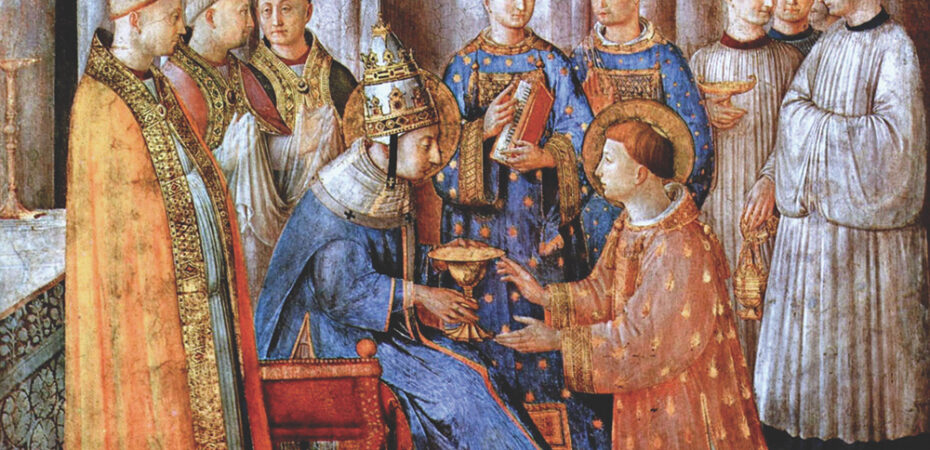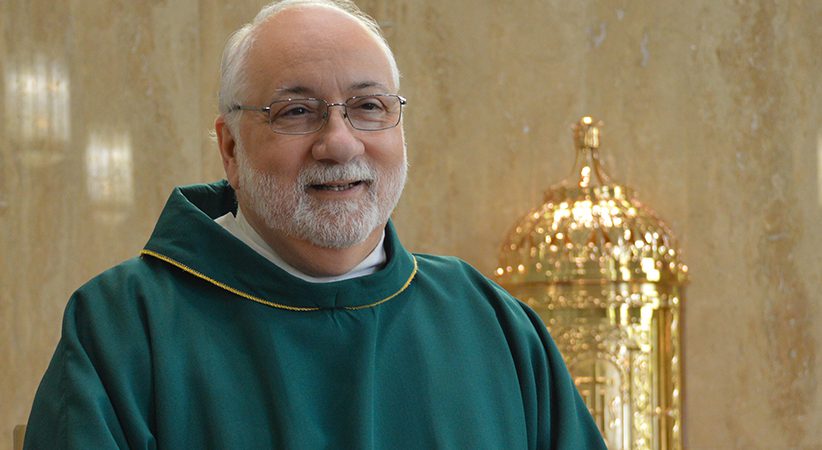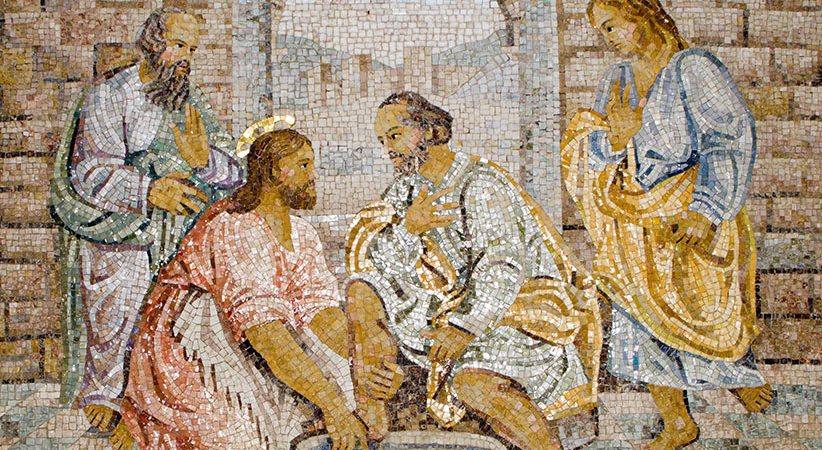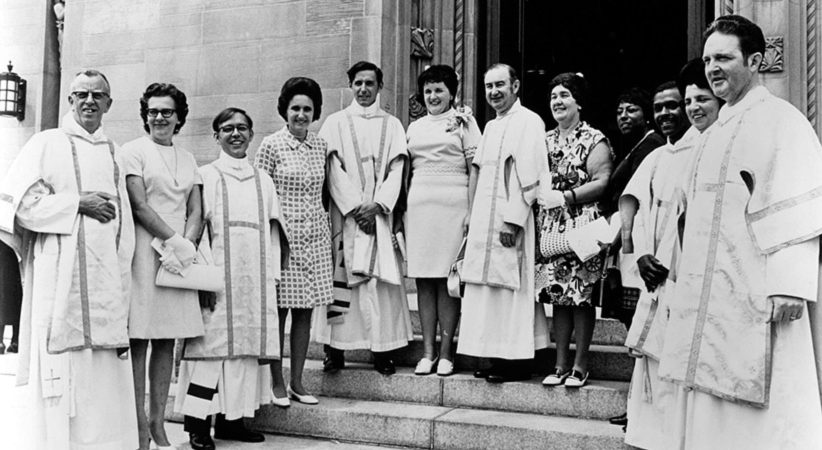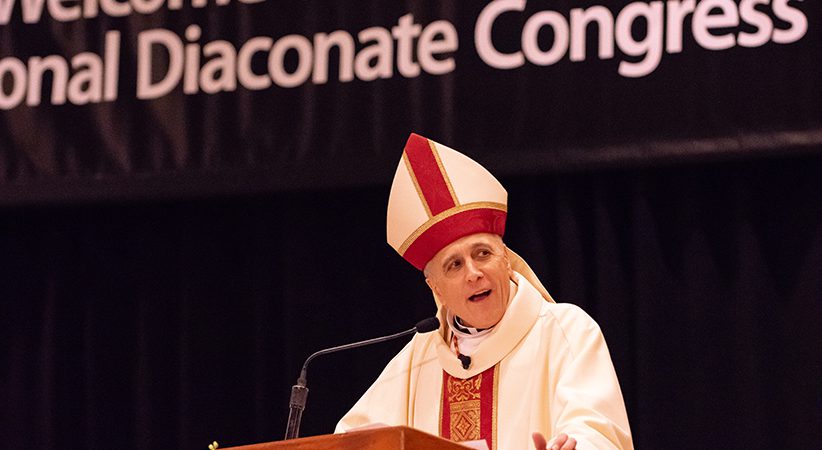St. Lawrence Outside the Walls
Exploring this minor papal basilica and Roman pilgrim church
Carlos Briceño Comments Off on St. Lawrence Outside the Walls
To understand St. Lawrence Outside the Walls Church, a minor papal basilica and one of Seven Pilgrim Churches in Rome, you have to understand the deacon it was named after, especially his martyrdom.
During the third century, the Roman Emperor Valerian had one aim concerning Christians — to erase their faith in the risen Lord. He had three methods to accomplish this: prohibit Christians from assembling; execute their leaders; and confiscate their property. In 258, recipients of the emperor’s persecution were Pope Sixtus II and St. Lawrence, one of seven deacons of the Roman Church at the time.
On the day of the pope’s martyrdom, the prefect of Rome asked Lawrence, the caretaker of Church funds who dispensed alms to the poor, to gather the Church’s riches and hand them over to the imperial treasury. Lawrence admitted that he had access to great wealth and asked for a short delay to make an inventory of the “treasures of Christ.”
Three days later, after assembling more than 1,500 of the poor, lame, blind, widowed and crippled people that the Church supported, he said to the prefect: “Come with me and admire the incomparable riches of the sanctuary of our God.” The prefect recoiled at the sight, which prompted Lawrence to add: “Why do you shudder? See, here is the gold which I promised you — gold of a kind that fire cannot touch or thief steal from you. … Behold these choice pearls, these sparkling gems.”
After Lawrence was tortured and put to death, a special devotion arose in his honor, which led Emperor Constantine I to build an oratory on the site where Lawrence was martyred. The oratory became two churches joined in the middle, built in stages and enlarged in layers over time to become the Basilica of Saint Lawrence Outside the Walls.
The diaconate is memorialized in the church as two frescoes depicting events in the lives of St. Lawrence and the first martyred deacon, Stephen. Relics of both men are interred in the crypt under the high altar.
The lower level of the church has a marble stone slab beneath the choir floor that is supposed to be the stone where Lawrence was placed after he was executed. Interred in the basilica are several popes and saints, including Blessed Pope Pius IX, who declared the dogma of the Immaculate Conception, and St. Hilarius.
One of the famous images associated with the basilica is a photo of Pope Pius XII, standing outside the church on July 19, 1943, with his arms outstretched — the pose making it seem like the pope was trying to hug the surrounding crowd of shocked and somber-looking Italians.
Only hours earlier, 521 American airplanes had flown over Rome as part of the British and American invasion of Sicily, which included a bombing run by the Americans on a Roman freight yard and steel factory in the San Lorenzo district. Between 3,000 to 5,000 Italians are estimated to have been wounded or killed during the air raids.
Pius XII knelt and prayed with those gathered outside the ruins of the church, trying to comfort those who were wounded. His white soutane, or cassock, was soon stained with blood. He also distributed $2 million Italian lire to those in the crowd.
Unfortunately, the church, which was not an official target, was also hit, causing major damage to its roof and portico. The restoration continued until 1948.
A statue now stands in a courtyard in front of the church depicting Pope Pius XII’s iconic pose, which should conjure memories of a deacon named Lawrence, who, centuries ago, also distributed money to the poor in Rome — and was killed for being a servant to those in need.
His memory and faith live on. The beautiful church named in his honor testifies to that.
CARLOS BRICEÑO is director of communications and evangelization at the Basilica of St. Mary in Old Town, Alexandria, Virginia.
……………………………………………………………………………………………………………………………………………….
Seven Pilgrim Churches of Rome
St. Philip Neri started the tradition of visits to seven churches in Rome. These churches each have relics of the apostles, saints and Christian martyrs. These churches include: St. Peter’s Basilica, St. Paul Outside the Walls, St. Sebastian’s, St. John Lateran, Holy Cross in Jerusalem, St. Lawrence Outside the Walls and St. Mary Major.
……………………………………………………………………………………………………………………………………………….

